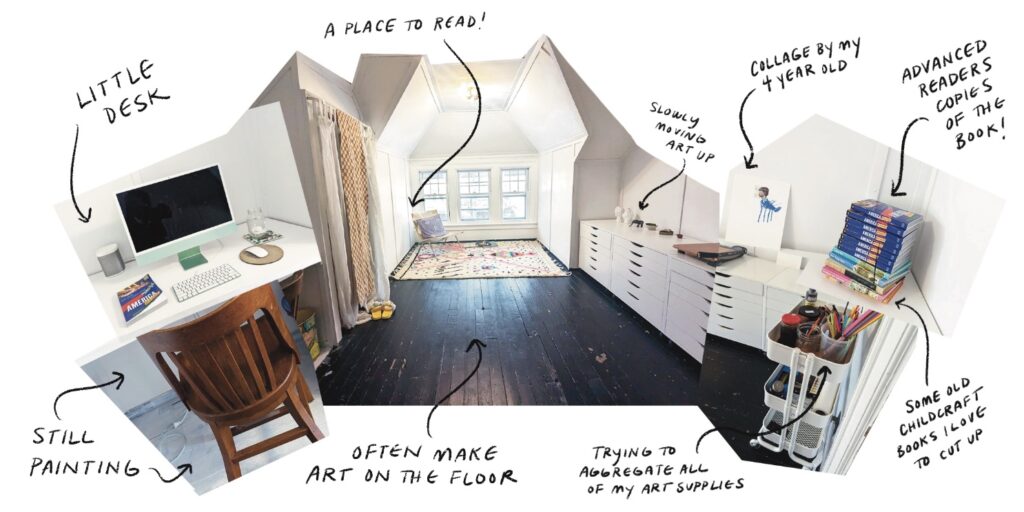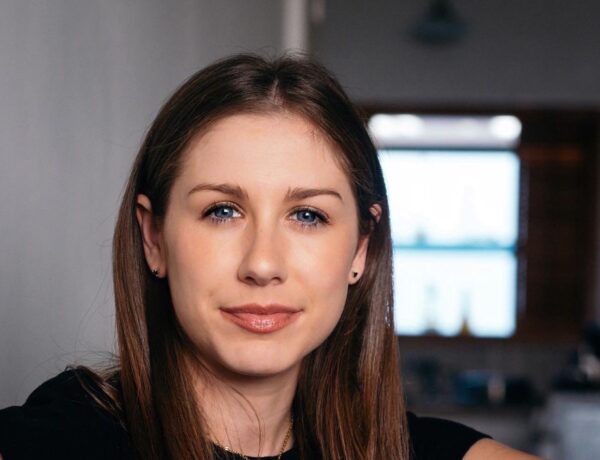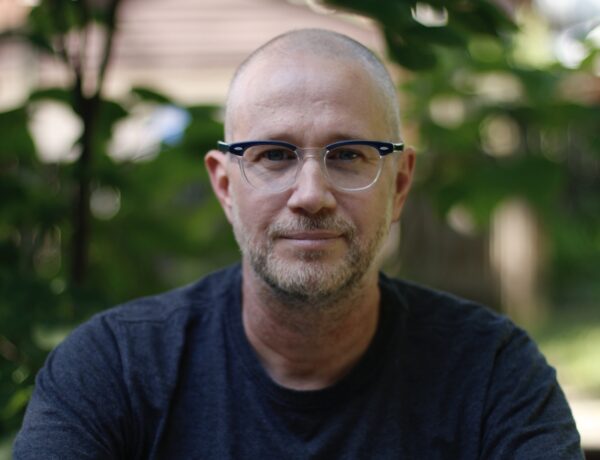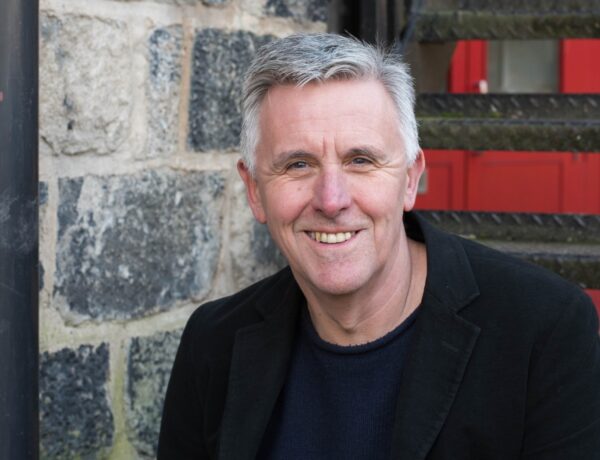Ariel Aberg-Riger is a self-taught artist whose work has been featured in gallery shows, magazines, newspapers, apps, plates, and even in a hit card game.
She is focused on using the power of visual storytelling to explore issues of equity and social justice, encouraging readers to think differently about history, science, policy, and the other forces that shape our lives.
Ariel lives with her wife and kids in sunny Buffalo, NY, and is currently working on a book about American history and identity set to be published by Balzer + Bray / HarperCollins in 2023. She is a 2020 NYSCA/NYFA Artist Fellow in Nonfiction Literature, and a member of the Tin House 2020 Summer Workshop.
Looking for inspiration to help you achieve your writing goals? Subscribe to our newsletter for exclusive insights into the routines, habits, and techniques of some of the most celebrated authors in history.
Hi Ariel! We’re delighted to have you as a guest on Famous Writing Routines. For our readers who may not be familiar with your work, could you please give us a brief introduction to yourself?
Of course! My name is Ariel and I’m a visual storyteller. When people imagine visual storytelling they imagine all sorts of things—photography, graphic novels, films, comics—and that’s one of the reasons I love it, because it’s this really open amorphous space to create in. For me, visual storytelling is something that uses both words and images to tell a story.
I mainly write nonfiction, and often use collage as my main medium, but I also write fiction and draw. The point for me, is telling the fullest story possible, so whatever elements lend themselves to a particular telling, I follow them. I’ve written articles about everything from the history of the public library to Mr. Rogers to deep sea mining for years, and my first book, America Redux, which is a visual exploration of U.S. history is coming out on May 2nd.
You’re focused on using the power of visual storytelling to explore issues of equity and social justice. Can you talk about how you approach incorporating social justice and equity themes into your work?
I don’t know if it’s that I’m incorporating those things thematically as much as I am most drawn to digging into stories that expose power structures and untangle the roots of injustice. Visual storytelling is my way of creating clarity—I gravitate toward stories I myself want to know more about. I write about history a lot precisely because I never connected with history when I was younger. Seeing things laid out so piecemeal—as isolated events instead of arcs—never clicked for me.
Once I started seeing history as relational, as something that is always building and interacting, as systems of power that were carefully crafted, and maintained, and protected for certain reasons, by certain people, I became much more invested and taken in by those stories.
I think my work is often driven by questions I find myself asking—how did we get to this point? Why do we tell this story in this way? Who are we including? Who have we excluded? Why do these people have power, and these people don’t? I am just always chasing questions down and down and down to their roots to try to better understand why the world is the way it is.
How does your work as a self-taught artist inform your perspective and approach to creating?
No one ever told me no? (Laughs) No, I mean, I never went to art school, or studied art in a traditional way. I studied Philosophy. And I think that the two biggest freedoms that gave me were that 1) I never felt like I had to fit into an existing box—I had no concept of myself as an illustrator or designer or writer or collage artist, I just did what I liked and what I felt like doing, and 2) Art was always my “fun” place. It was always the place I escaped to when I needed a break from “work,” a place where I could play and explore. Now it’s my job! But I came to it as a career really late in life, and in doing so I think I managed to preserve a lot of that joy around creating.
Can you speak to your experience as a 2020 NYSCA/NYFA Artist Fellow and a member of the Tin House 2020 Summer Workshop and how it has influenced your work?
So, again, as someone who came to making professionally pretty late in life (I didn’t start publishing visual stories until I was in my mid-late 30s, and I’ll be 41 when my first book comes out), I don’t have a community of creators around me that I work with. I don’t have a writing group, or creative workshop groups. And I think that because I came up non-traditionally I didn’t really think that a lot of those spaces were for me.
2020 was a huge turning point for me career wise—I sold my first book, got accepted into Tin House, and got accepted as a NYSCA/NYFA fellow all within the span of a few months. And it was super super affirming that I was on the right track. That this was something I should pursue, was being told I was “allowed” to pursue.
I hate thinking of it like that, but I think with art there are often times (for me at least!) when you’re playing around, and there is a lot of self-doubt. Not even around the work itself. It’s less, for me, about questioning the work, and more about, like, is this really what you are spending your time on? Does this make sense? So having institutions, and creators that you trust look at you and be like YES. KEEP GOING. It’s wildly empowering.
Do you struggle to stay focused while writing? You’re not alone! That’s why Famous Writing Routines recommends Freedom – the ultimate app and website blocker for Mac, Windows, Android, iOS, and Chrome. With over 2.5 million users, Freedom helps writers stay on task and avoid distractions. Get started for free today and reclaim your productivity!
What does a typical creative day look like for you?
I have two young kids, and I am the one with the flexible work schedule, so a lot of my day is structured around being a mom. I get the kids up and out to school, and usually get back home and to my desk around 10. When I was deep in writing/making the book my days were super structured because I had a ton to get through, and being really scheduled was the only way I could get through such a beast of a project.
So, I would know that on Monday I was aiming to finish researching a certain chapter, or that I wanted a base spread of images done by Tuesday so I could flow in text on top the next day, etc. At the moment I am in the weird space between having finished the book but still pre-launch, so my days right now are bouncing between a lot of smaller projects.
Today, for example, I started my morning having coffee with a friend, and then had a call with my agent about some picture book proposals I’m developing, and then I reformatted a visual story I did a few years ago for a thinker I admire who is going to use it to kickstart a conference this weekend, I’m answering these questions, I’m prepping for a workshop I’m doing with college kids next week, all while waiting on edits for a visual story magazine spread I’ve been working on.
There’s this funky late 1960s kind of psychedelic collage illustration style I’ve been playing with I want to push on a little more later this afternoon. I need to decide what to have for lunch. I need to go get the kids in a little bit, and then I’ll pause and come back to everything post kid bedtime from like 10pm-1am. Which is probably my most “creative” time of the day because the house is quiet and I can play. I’m all over the place. But that’s pretty typical, I guess!
How do you balance working on your art and raising a family?
I feel like that last question covered this a fair amount. (Laughs). Um, you just do it! And you feel very tired most of the time. No, but I actually had a really lovely conversation with an artist last fall who is about 10 years younger than I am, and he was talking about how he and his partner are in the thick of talking about starting a family, and how he’s scared of how that will change his relationship to art, and having time to create. And it made me really think about being a parent, and being an artist, and how so much of the framing and conversation around that balance is about loss—loss of time, loss of space, loss of personhood.
But for me, parenting is really really generative. I actually published my first visual story 2 months after my first kid was born. And I ended up selling my book proposal when my second kid was a baby. And at the time that seemed like a coincidence. But looking back, I think it happened that way for a reason. Kids are A LOT. But they can also be such powerful positive change agents in your life. Your time is more condensed when you’re a parent, but I think in a way that makes you really be more discerning.
I am much more precise about where and how I am investing my energy now versus when I was younger, because there is only so much me to go around. I also think that when you allow yourself to be fully present with children it brings you into a space that creatives are often trying to access. You’re just IN IT. And they become your teachers. They teach you how to look again, how to be again, how to find joy and wonder everywhere. And that’s what so much of art is about, right?
If you could have a conversation with an author throughout history about their writing routine and creative process, who would that person be?
Oh man, I am terrible at these questions! They are asked and I immediately forget every person who has ever existed. I would probably choose someone who worked in both pictures and words…a picture book author, most likely because I think picture books are really the purest, most incredible form of the work I love the most. Maybe Remy Charlip? Or Maurice Sendak? Or Ruth Krauss? Or Margaret Wise Brown? Or Arnold Lobel? Maybe I could have cake and coffee with all of those people? Together?
What does your current writing workspace look like?
I just moved into a new space! My wife took over my office at the beginning of the pandemic, so I’ve been working from a desk in our bedroom for the past three years—I sold the book from my bedroom the first week of the pandemic, and sent the final edits from that little bedroom desk as well! But I finally managed to clean out a corner of the attic and am in the process of turning it into a studio.
Right now it is a pretty blank slate, with three main corners—my desk and computer for writing, a little rug and chair for reading, and a big bank of flat files (and an empty chunk of floor) for drawing and collaging. But I am slowly starting to move things in so hopefully over the next few months it will all come together! We see, we see…

Affiliate disclaimer: Some links on this website are affiliate links. We may earn a small commission if you make a purchase through these links, but only promote products we truly believe in. We disclose affiliate links and give honest reviews.



No Comments